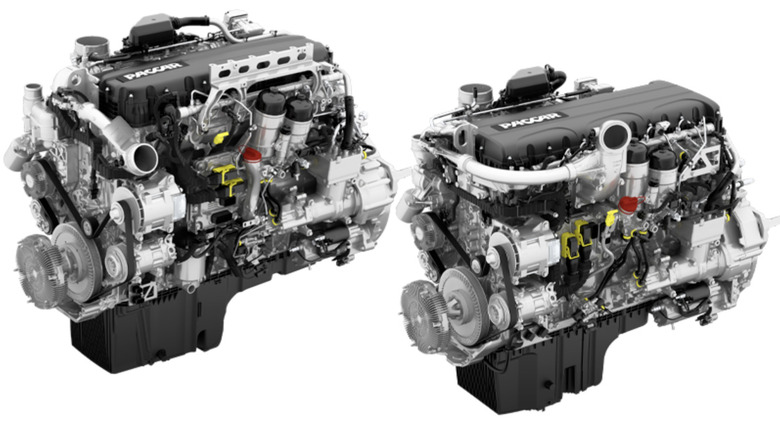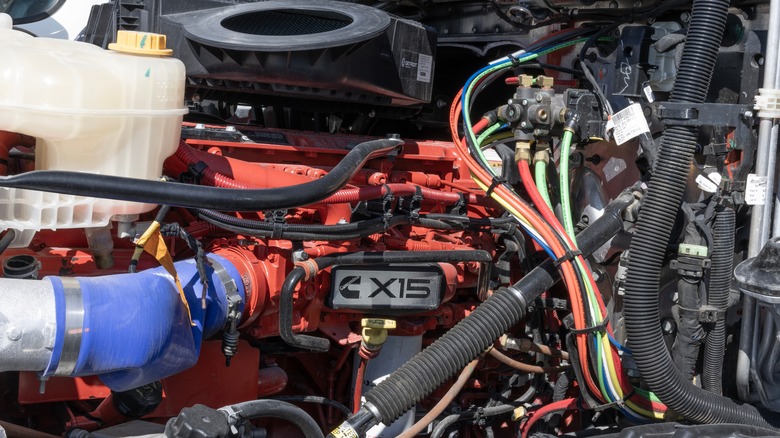What Kind Of Engines Do Kenworth Trucks Have & How Much Power Do They Need?
One of the key elements that supports Kenworth's reputation for dependability and driver-oriented engineering is its legendary engines. Whether you're operating in heavy vocational roles or hauling goods coast to coast, Kenworth trucks run on engines built to satisfy demanding commercial standards. The main power sources for the brand are MX-11 and MX-13 diesel engines, derived from PACCAR, its parent company. Made just for Kenworth and Peterbilt vehicles, these engines are built for efficiency, dependability, and flawless connection with the digital and drivetrain systems of the truck.
Still, Kenworth does not stop there. For uses needing more power, torque, or flexibility, it also provides Cummins engines — most famously the X15. Both engines are incredible in their own right, but they satisfy slightly different purposes. Cummins is generally preferred for heavy-duty work, off-road chores, or high horsepower needs; PACCAR engines are perfect for predictable, long-haul routes where fuel economy and integration are priorities.
From fuel-conscious fleet operators to job-specific, torque-heavy applications, this dual offering of PACCAR and Cummins engines enables Kenworth to cover a broad range of trucking needs. Engine selection is now more about maximizing total cost of ownership rather than just raw power.
Smart power for daily hauling: PACCAR MX Engines
PACCAR's in-house engine, the 12.9-liter MX-13, is the flagship for most Kenworth Class 8 models and is one of the most powerful truck engines while having outstanding fuel economy. Its 1,850 lb-ft of torque and up to 510 hp make it a powerhouse fit for long-distance routes, high payloads, and fuel-efficient running. The engine uses a compact graphite iron (CGI) block for enhanced strength and weight reduction and features advanced common rail fuel injection, variable geometry turbocharging, and predictive cruise control.
Built for regional haul or weight-sensitive operations, its smaller cousin, the 10.8-liter MX-11, generates up to 445 hp and 1,700 lb-ft of torque. Designed to be lightweight, it increases payload capacity and fuel economy in uses when absolute power is not required. For fleets running in mixed-use settings or smaller delivery routes, the MX-11 is a perfect fit.
One great benefit of these PACCAR engines is vertical integration with PACCAR's 12-speed automated transmission, which provides drivers with seamless engine-to-gearbox communication. Especially in settings where drives may be climb-heavy or very stop-start, the integration helps lower wear, increase driver comfort, and cut fuel use. For owner-operators and fleet managers, this customized, all-in-one engineering solution produces smooth operation and simplified servicing, vital components of trucking.
What is sufficient power?
Although Kenworth trucks can be spec'd with over 600 hp, specifically with the 14.9-liter Cummins X15, most long-distance operators don't need extreme output to get the job done. Usually falling between 400 and 500 hp, this industry sweet spot is where fuel economy, dependability, and torque balance most benefit the usual 80,000-pound load limit. Offering enough for daily highway use without the cost penalties of running more engine than you need, the PACCAR MX-13 fits right into that range.
Conversely, the Cummins X15 is intended for use in cases where brute force is needed. Offering up to 605 hp and 2050 lb-ft of torque, the X15 is intended for heavy-duty or vocational use — think logging, mining, or large loads where massive amounts of torque at low RPMs are vital. In operations that take place in remote locations, Cummins engines also appeal for their long service intervals and broad parts availability. As states tighten air pollution regulations, Kenworth also offers natural gas substitutes like the Cummins ISX12N for fleets trying to meet strict emissions targets without turning to electric power.
Regardless of the route, weight, or objective, Kenworth makes sure fleet managers and drivers can match their engine choice to the work. It's more than just horsepower; it's about having the correct level of it, delivered effectively.


